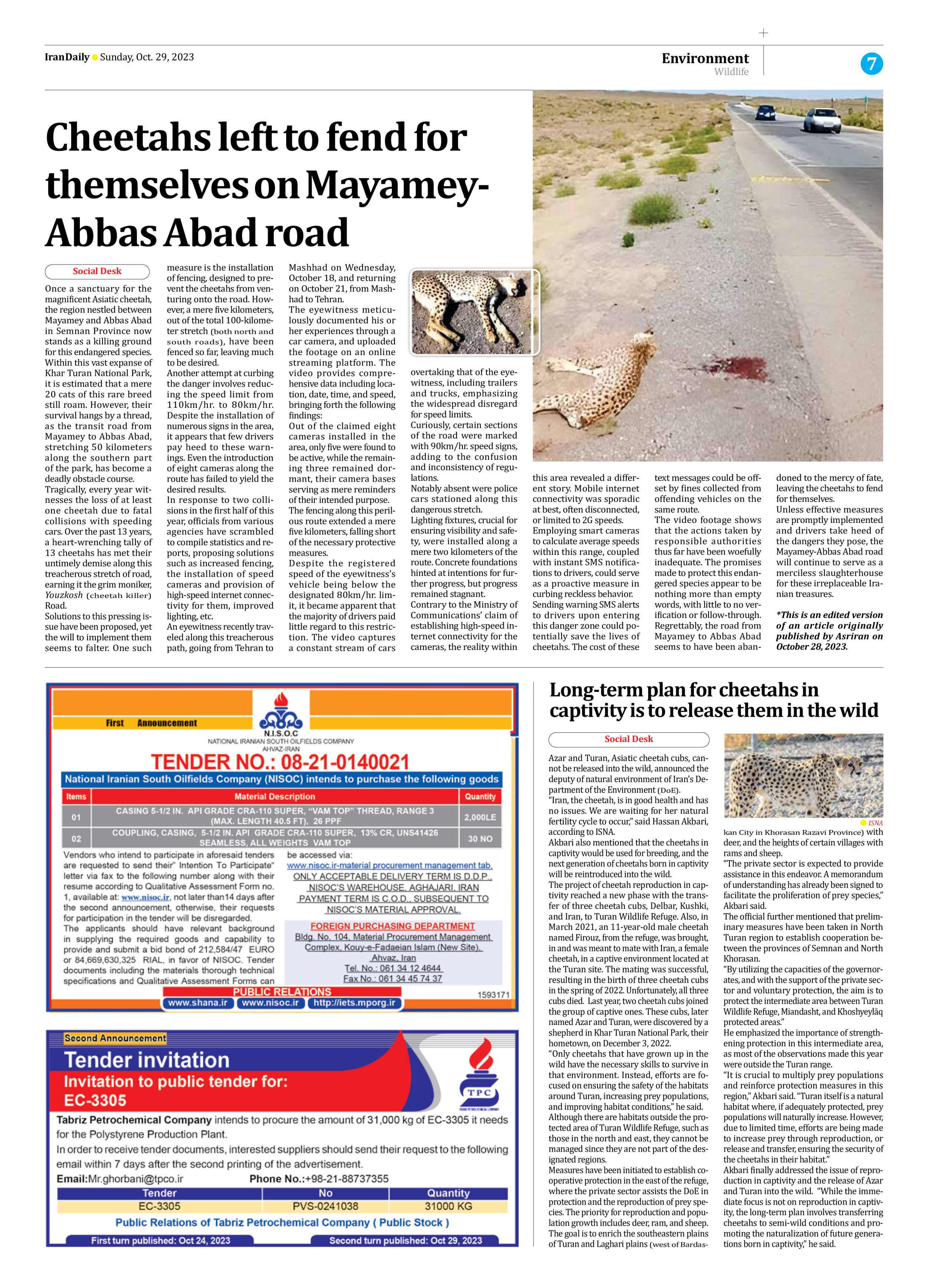
Long-term plan for cheetahs in captivity is to release them in the wild
Azar and Turan, Asiatic cheetah cubs, cannot be released into the wild, announced the deputy of natural environment of Iran’s Department of the Environment (DoE).
“Iran, the cheetah, is in good health and has no issues. We are waiting for her natural fertility cycle to occur,” said Hassan Akbari, according to ISNA.
Akbari also mentioned that the cheetahs in captivity would be used for breeding, and the next generation of cheetahs born in captivity will be reintroduced into the wild.
The project of cheetah reproduction in captivity reached a new phase with the transfer of three cheetah cubs, Delbar, Kushki, and Iran, to Turan Wildlife Refuge. Also, in March 2021, an 11-year-old male cheetah named Firouz, from the refuge, was brought, in and was meant to mate with Iran, a female cheetah, in a captive environment located at the Turan site. The mating was successful, resulting in the birth of three cheetah cubs in the spring of 2022. Unfortunately, all three cubs died. Last year, two cheetah cubs joined the group of captive ones. These cubs, later named Azar and Turan, were discovered by a shepherd in Khar Turan National Park, their hometown, on December 3, 2022.
“Only cheetahs that have grown up in the wild have the necessary skills to survive in that environment. Instead, efforts are focused on ensuring the safety of the habitats around Turan, increasing prey populations, and improving habitat conditions,” he said.
Although there are habitats outside the protected area of Turan Wildlife Refuge, such as those in the north and east, they cannot be managed since they are not part of the designated regions.
Measures have been initiated to establish cooperative protection in the east of the refuge, where the private sector assists the DoE in protection and the reproduction of prey species. The priority for reproduction and population growth includes deer, ram, and sheep.
The goal is to enrich the southeastern plains of Turan and Laghari plains (west of Bardaskan City in Khorasan Razavi Province) with deer, and the heights of certain villages with rams and sheep.
“The private sector is expected to provide assistance in this endeavor. A memorandum of understanding has already been signed to facilitate the proliferation of prey species,” Akbari said.
The official further mentioned that preliminary measures have been taken in North Turan region to establish cooperation between the provinces of Semnan and North Khorasan.
“By utilizing the capacities of the governorates, and with the support of the private sector and voluntary protection, the aim is to protect the intermediate area between Turan Wildlife Refuge, Miandasht, and Khoshyeylāq protected areas.”
He emphasized the importance of strengthening protection in this intermediate area, as most of the observations made this year were outside the Turan range.
“It is crucial to multiply prey populations and reinforce protection measures in this region,” Akbari said. “Turan itself is a natural habitat where, if adequately protected, prey populations will naturally increase. However, due to limited time, efforts are being made to increase prey through reproduction, or release and transfer, ensuring the security of the cheetahs in their habitat.”
Akbari finally addressed the issue of reproduction in captivity and the release of Azar and Turan into the wild. “While the immediate focus is not on reproduction in captivity, the long-term plan involves transferring cheetahs to semi-wild conditions and promoting the naturalization of future generations born in captivity,” he said.







